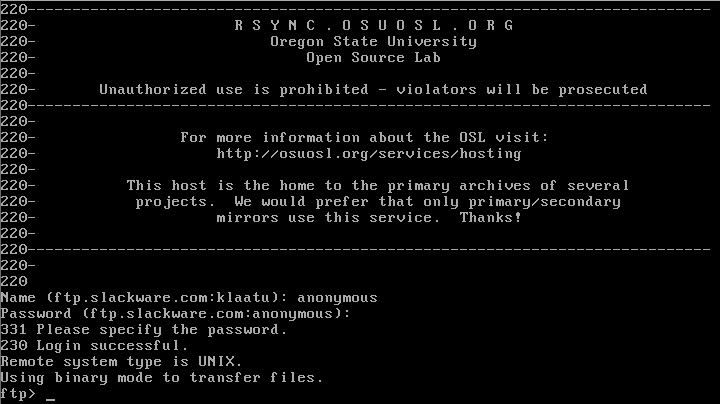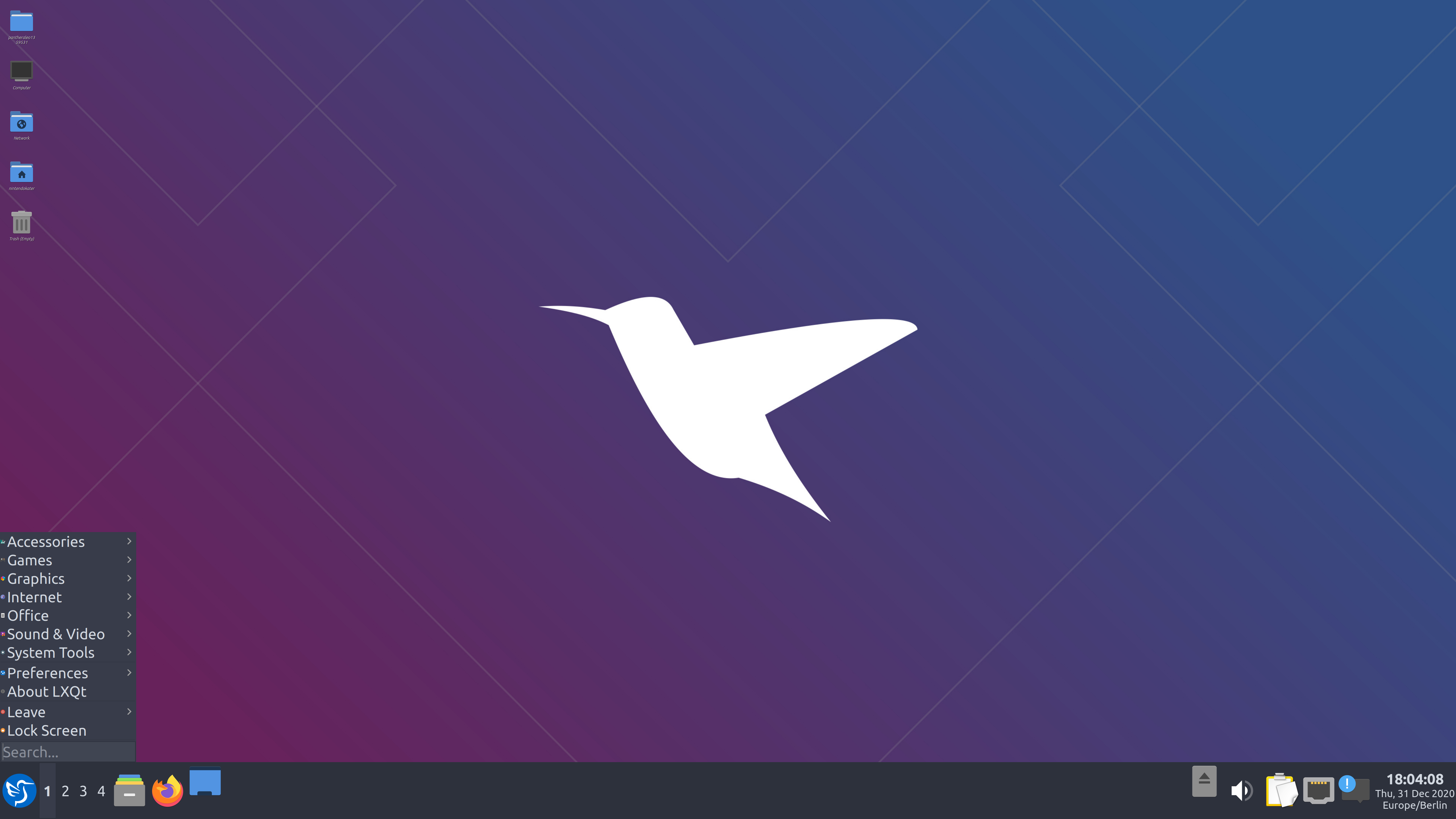|
AUSTRUMI
(Austrum Latvijas Linukss) is a bootable live CD Linux distribution based on Slackware. It was created & is actively maintained by a group from the Latgale region of Latvia. The entire operating system and all the applications run from RAM, making Austrumi faster than larger distributions that must read from a disk, and allowing the boot medium to be removed after the operating system has booted. See also * Comparison of Linux Live Distros * Lightweight Linux distribution * List of Linux distributions that run from RAM This is a list of Linux distributions that can be run entirely from a computer's RAM, meaning that once the OS has been loaded to the RAM, the media it was loaded from can be completely removed, and the distribution will run the PC through th ... References External links * * Mirrorserver http://austrumi.ru.lv/ {{Linux distributions Slackware Linux distributions without systemd Linux distributions ... [...More Info...] [...Related Items...] OR: [Wikipedia] [Google] [Baidu] |
List Of Linux Distributions That Run From RAM
This is a list of Linux distributions that can be run entirely from a computer's RAM, meaning that once the OS has been loaded to the RAM, the media it was loaded from can be completely removed, and the distribution will run the PC through the RAM only. This ability allows them to be very fast, since reading and writing data from/to RAM is much faster than on a hard disk drive or solid state drive. Many of these operating systems will load from a removable media such as a Live CD or a Live USB stick. A "frugal" install can also often be completed, allowing loading from a hard disk drive instead. This feature is implemented in live-initramfs and allows the user to run a live distro that does not run from ram by default by adding toram to the kernel boot parameters. Additionally some distributions can be configured to run from RAM, such as Ubuntu using the ''toram'' option included in the Casper scripts. Table See also * tmpfs; by mounting a tmpfs and running files that ... [...More Info...] [...Related Items...] OR: [Wikipedia] [Google] [Baidu] |
Comparison Of Linux Distributions
Technical variations of Linux distributions include support for different hardware devices and systems or software package configurations. Organizational differences may be motivated by historical reasons. Other criteria include security, including how quickly security upgrades are available; ease of package management; and number of packages available. These tables compare notable distribution's latest stable release on wide-ranging objective criteria. It does not cover each operating system's subjective merits, branches marked as unstable or beta, nor compare Linux distributions with other operating systems. General The table below shows general information about the distributions: creator or producer, release date, the latest version, etc. Linux distributions endorsed by the Free Software Foundation are marked 100% Free under the System distribution commitment column. Technical The table below shows the default file system, but many Linux distributions support some ... [...More Info...] [...Related Items...] OR: [Wikipedia] [Google] [Baidu] |
Comparison Of Linux Live Distros
Technical variations of Linux distributions include support for different hardware devices and systems or software package configurations. Organizational differences may be motivated by historical reasons. Other criteria include security, including how quickly security upgrades are available; ease of package management; and number of packages available. These tables compare notable distribution's latest stable release on wide-ranging objective criteria. It does not cover each operating system's subjective merits, branches marked as unstable or beta, nor compare Linux distributions with other operating systems. General The table below shows general information about the distributions: creator or producer, release date, the latest version, etc. Linux distributions endorsed by the Free Software Foundation are marked 100% Free under the System distribution commitment column. Technical The table below shows the default file system, but many Linux distributions support some ... [...More Info...] [...Related Items...] OR: [Wikipedia] [Google] [Baidu] |
Austrumi 2
(Austrum Latvijas Linukss) is a bootable live CD Linux distribution based on Slackware. It was created & is actively maintained by a group from the Latgale region of Latvia. The entire operating system and all the applications run from RAM, making Austrumi faster than larger distributions that must read from a disk, and allowing the boot medium to be removed after the operating system has booted. See also * Comparison of Linux Live Distros * Lightweight Linux distribution * List of Linux distributions that run from RAM This is a list of Linux distributions that can be run entirely from a computer's RAM, meaning that once the OS has been loaded to the RAM, the media it was loaded from can be completely removed, and the distribution will run the PC through th ... References External links * * Mirrorserver http://austrumi.ru.lv/ {{Linux distributions Slackware Linux distributions without systemd Linux distributions ... [...More Info...] [...Related Items...] OR: [Wikipedia] [Google] [Baidu] |
Slackware
Slackware is a Linux distribution created by Patrick Volkerding in 1993. Originally based on Softlanding Linux System, Slackware has been the basis for many other Linux distributions, most notably the first versions of SUSE Linux distributions, and is the oldest distribution that is still maintained. Slackware aims for design stability and simplicity and to be the most "Unix-like" Linux distribution. It makes as few modifications as possible to software packages from upstream and tries not to anticipate use cases or preclude user decisions. In contrast to most modern Linux distributions, Slackware provides no graphical installation procedure and no automatic dependency resolution of software packages. It uses plain text files and only a small set of shell scripts for configuration and administration. Without further modification it boots into a command-line interface environment. Because of its many conservative and simplistic features, Slackware is often considered to be most ... [...More Info...] [...Related Items...] OR: [Wikipedia] [Google] [Baidu] |
Lightweight Linux Distribution
A light-weight Linux distribution is one that uses lower memory and/or has less processor-speed requirements than a more "feature-rich" Linux distribution. The lower demands on hardware ideally result in a Responsiveness, more responsive machine, and/or allow devices with fewer system resources (e.g. older or Embedded system, embedded hardware) to be used productively. The lower memory and/or processor-speed requirements are achieved by avoiding software bloat, i.e. by leaving out features that are perceived to have little or no practical use or advantage, or for which there is no or low demand. The perceived weight of a Linux distribution is strongly influenced by the desktop environment included with that distribution. Accordingly, many Linux distributions offer a choice of editions. For example, Canonical (company), Canonical hosts several variants ("flavors") of the Ubuntu (operating system), Ubuntu distribution that include desktop environments other than the default GNOM ... [...More Info...] [...Related Items...] OR: [Wikipedia] [Google] [Baidu] |
Latvia
Latvia ( or ; lv, Latvija ; ltg, Latveja; liv, Leţmō), officially the Republic of Latvia ( lv, Latvijas Republika, links=no, ltg, Latvejas Republika, links=no, liv, Leţmō Vabāmō, links=no), is a country in the Baltic region of Northern Europe. It is one of the Baltic states; and is bordered by Estonia to the north, Lithuania to the south, Russia to the east, Belarus to the southeast, and shares a maritime border with Sweden to the west. Latvia covers an area of , with a population of 1.9 million. The country has a temperate seasonal climate. Its capital and largest city is Riga. Latvians belong to the ethno-linguistic group of the Balts; and speak Latvian, one of the only two surviving Baltic languages. Russians are the most prominent minority in the country, at almost a quarter of the population. After centuries of Teutonic, Swedish, Polish-Lithuanian and Russian rule, which was mainly executed by the local Baltic German aristocracy, the independent R ... [...More Info...] [...Related Items...] OR: [Wikipedia] [Google] [Baidu] |
Latgale
Latgale ( ltg, Latgola; ; ger, Lettgallen; be, Латгалія, Łathalija; pl, Łatgalia; la, Lettgallia), also known as Latgalia is one of the Historical Latvian Lands. It is the easternmost region and is north of the Daugava River. While most of Latvia is historically Lutheran, Latgale is predominantly Roman Catholic: 65.3% according to a 2011 survey. There is also a strong Eastern Orthodox minority (23.8%), of which 13.8% are Russian Orthodox Christians and 10.0% are Old Believers. As of 2020, the region's population was 255,968. The region has a large population of ethnic Russians, especially in Daugavpils, the largest city in the region and the location of the region's only public university, the University of Daugavpils. Many of the Russians who lived in Latgale before Soviet rule are Old Believers. Rēzekne, often called the heart of Latgale, Krāslava, and Ludza are other large towns in the region, which also has a Belarusian minority. There is also a significant ... [...More Info...] [...Related Items...] OR: [Wikipedia] [Google] [Baidu] |
Live CD
A live CD (also live DVD, live disc, or live operating system) is a complete bootable computer installation including operating system which runs directly from a CD-ROM or similar storage device into a computer's memory, rather than loading from a hard disk drive. A live CD allows users to run an operating system for any purpose without installing it or making any changes to the computer's configuration. Live CDs can run on a computer without secondary storage, such as a hard disk drive, or with a corrupted hard disk drive or file system, allowing data recovery. As CD and DVD drives have been steadily phased-out, live CDs have become less popular, being replaced by live USBs, which are equivalent systems written onto USB flash drives, which have the added benefit of having writeable storage. The functionality of a live CD is also available with an external hard disk drive connected by USB. Many live CDs offer the option of persistence by writing files to a hard drive or USB fl ... [...More Info...] [...Related Items...] OR: [Wikipedia] [Google] [Baidu] |
Linux Distribution
A Linux distribution (often abbreviated as distro) is an operating system made from a software collection that includes the Linux kernel and, often, a package management system. Linux users usually obtain their operating system by downloading one of the Linux distributions, which are available for a wide variety of systems ranging from embedded devices (for example, OpenWrt) and personal computers (for example, Linux Mint) to powerful supercomputers (for example, Rocks Cluster Distribution). A typical Linux distribution comprises a Linux kernel, GNU tools and libraries, additional software, documentation, a window system (the most common being the X Window System, or, more recently, Wayland), a window manager, and a desktop environment. Most of the included software is free and open-source software made available both as compiled binaries and in source code form, allowing modifications to the original software. Usually, Linux distributions optionally include some proprietary so ... [...More Info...] [...Related Items...] OR: [Wikipedia] [Google] [Baidu] |
Linux
Linux ( or ) is a family of open-source Unix-like operating systems based on the Linux kernel, an operating system kernel first released on September 17, 1991, by Linus Torvalds. Linux is typically packaged as a Linux distribution, which includes the kernel and supporting system software and libraries, many of which are provided by the GNU Project. Many Linux distributions use the word "Linux" in their name, but the Free Software Foundation uses the name "GNU/Linux" to emphasize the importance of GNU software, causing some controversy. Popular Linux distributions include Debian, Fedora Linux, and Ubuntu, the latter of which itself consists of many different distributions and modifications, including Lubuntu and Xubuntu. Commercial distributions include Red Hat Enterprise Linux and SUSE Linux Enterprise. Desktop Linux distributions include a windowing system such as X11 or Wayland, and a desktop environment such as GNOME or KDE Plasma. Distributions intended for ser ... [...More Info...] [...Related Items...] OR: [Wikipedia] [Google] [Baidu] |







.jpg)